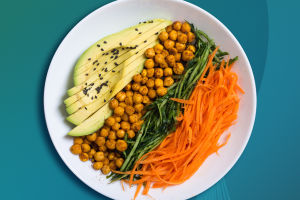We often hear someone sigh: "As long as the pasta is still there, Italy will not perish." No matter when and where Italians seem to have a fanatical enthusiasm for pasta.
Spaghetti is a traditional noodle dish made from durum wheat, water, or eggs. It is made into noodles in different shapes and cooked in boiling water. There are many types of spaghetti, each with its own name, and the length varies. The hollow-shaped spaghetti is called macaroni.
Regarding the origin of spaghetti, some say it originated from ancient Rome, and some say it originated from China.
There is an inference that in order to solve the problem of a large population and difficult food preservation, the Roman Empire came up with a clever plan of kneading flour into balls, rolling them into pancakes, cutting them into strips, and drying them, thus inventing pasta.
The earliest pasta was shaped around the 13th to 14th centuries AD, and it is most similar to the pasta we eat in the 21st century. After the Renaissance, the types of pasta and sauces gradually enriched with art.
Pasta sauces can be basically divided into red sauce and white sauce. Red sauce is a tomato-based sauce and is the most common. The green sauce is made of basil, pine nuts, olive oil, and other ingredients, and has a special and rich taste.
White sauce is a flour, milk, and cream-based sauce, mainly used for baked noodles, lasagne, and seafood pasta. Black sauce is made from cuttlefish juice and is mainly served with seafood pasta such as cuttlefish.
The difference between pasta and ordinary noodles lies in the following aspects:
1. Different nutrition: The raw material of pasta is Durum wheat, which has a higher protein and fiber content than ordinary noodles and provides a stronger sense of satiety.
2. Different appearance: The appearance of pasta is light yellow, and the shapes are varied, including straight, screw, butterfly, elbow, etc. Ordinary noodles are usually white in appearance, mostly straight, and can be narrow and oblate in long strips, occasionally in small pieces.
3. Different taste: Pasta is more resistant to cooking and has the characteristics of not sticking after a long time of cooking. Pasta needs to be cooked much longer than regular noodles, and it tastes firmer and al dente. Some friends may not be used to it and think it is not cooked. Ordinary noodles taste softer, and not as firm as pasta.
4. Different raw materials: Spaghetti, is made of Durum wheat, which is also the hardest wheat variety, and its density, gluten, and protein content are higher than ordinary wheat.
Ordinary noodles are made by kneading grain or bean flour with water first and then rolling or pressing. The raw materials used are flour made of grain or bean ingredients.
In summary, pasta and noodles have unique characteristics and are widely enjoyed by people all over the world. Pasta, in particular, has a long history and various types of sauces, making it a popular and beloved dish in many cultures.


